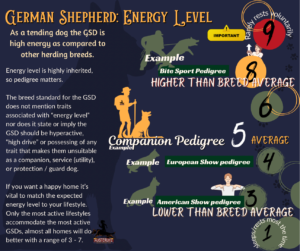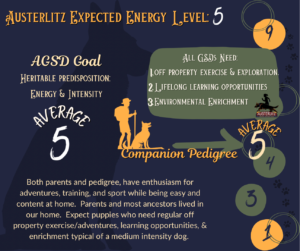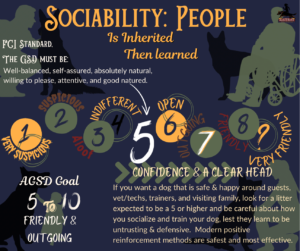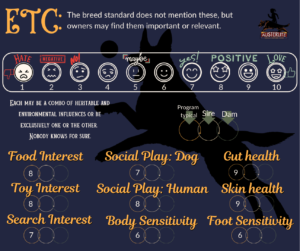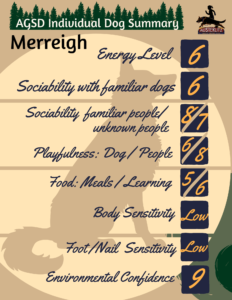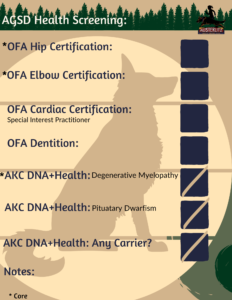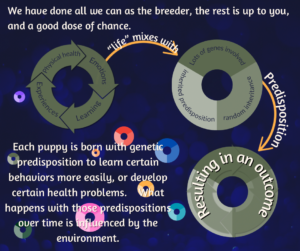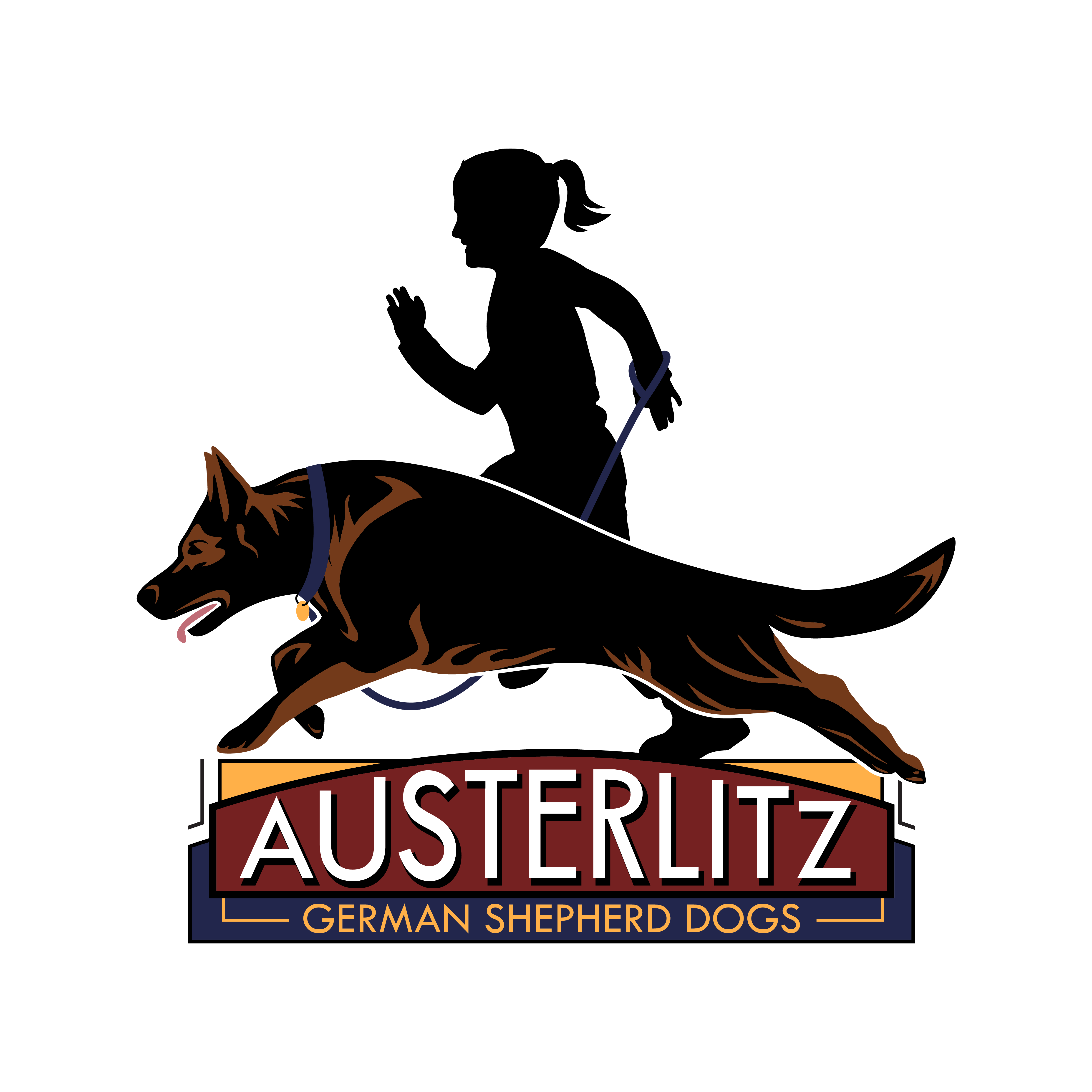For a multi-generation legacy breeder like ourselves, planning the next generation is a process that starts years in advance because unlike breeders who buy dogs for breeding we are responsible for managing a breeding program that spans many generations in the past, while looking forward several generations into the future.
We are balancing our major origin mother lines (Quinta v Westfork, Indeigh v Spezialblut, Gibsy v Wiesenborn, Eyleen v d Kaffeetwiete , Bette v Arnoux, and Lasha v Eisernen Kreuz) to ensure each one is represented through their descendants, now and into the future. Each of these foundation lines is valuable to us for the genetic traits (and memories of dearly loved dogs) they have passed down.
Most of our breedings are entirely “in house” meaning both the sire and dam are from our own breeding program. This is important because it ensures we do not lose valuable foundation lines, but also because we know these dogs extremely well and this allows us to predict both physical and behavioral traits with greater accuracy than when we bring in a new line - with its inevitable genetic surprises.
One of the biggest strength of a multi-generation breeder is how well we understand our own breeding dogs, having lived with these lines for decades and raised generations of individual dogs from them. This allows us to predict traits and produced consistent quality program wide. This means fewer surprises for you, as the owner. What we say the puppy's potential comes from first hand knowledge and not name dropping we have dogs never met.
For purposes of genetic diversity (a problem in the German Shepherd Dog) we have built our program with bloodlines from each major group represented (German Working, European Show, and pre-1990 DDR/East German) and to continue to keep our program as genetically diverse as possible while still maintaining consistency of traits. We do introduce outside bloodlines to our program regularly. This may be done by importing an adult dog (such as German Import Lasha vom Eisernen Kreuz in 2021, or California bred Kiro von haus Vierra in 2019) or by breeding our females to an outside stud (such as Iveigh’s sire O-Stryder von Nummer Eins.) Outside bloodlines always bring both gifts and vexations, and these may not be known for years following the breeding.
While planning always spans many years we will post on the planned breeding page only our plans for THAT year.
You can use the planned breeding page to look for a breeding that works with your schedule, or with expected talents or traits you are looking for keeping in mind this page is dynamic because dogs don’t always come in heat as expected, may not conceive, or we may simply decide the timing isn’t right.
Planned Breedings may include information on expected physical and behavioral traits for the planned litter. While our program is very consistent in the traits we produce, there are subtle differences between our dogs. For dogs who have outside lines there may be some dramatic differences from our typical, and these will be noted on the planned breeding and litters pages so you can be fully informed and make the best decision for your needs. Of course if you need help determining which litter might work best for your situation we are very happy to help.
Once a breedings has taken place you can find some trait prediction graphics to help you understand what type of dogs might be produced. Information on the parents energy level, sociability, health testing, and many other genetic or potentially genetic predispositions will be highlighted. A month after ovulation an ultrasound exam will be performed to determine if the female has conceived and to obtain an approximate puppy count.
